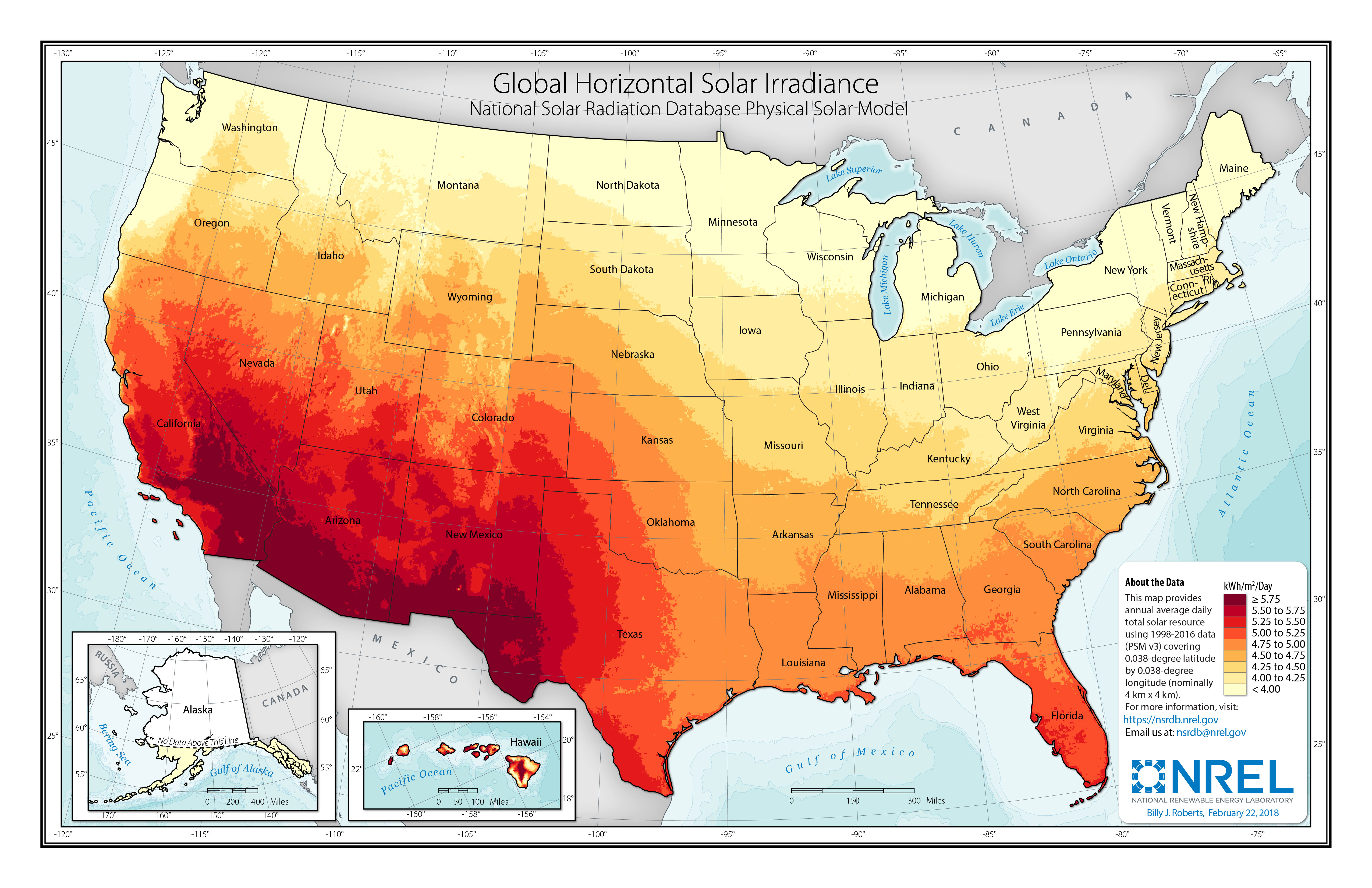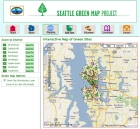I had some other ideas for today's post, but found my self on The Road with Viggo Mortensen. A storm at 3 am knocked out the electricity and it wasn't on again till noon. So today I am thinking about how I love that juice running through the wires and how to keep it flowing without sucking future earth dry. I'm thinking, maybe maps would help.
 |
Solar resource data (nrel.gov)
|
One way to keep the lights on is to go renewable. Solar and wind generation, however are very location dependent. So you build a model that intakes power generation parameters and outputs generating capacity. Take the climate measurements collected across the US, feed them into the model and, voila!, you've got a capacity value for all those locations. You could visualize those values by plotting colored dots on a map, but what really drives the idea home is to generalize the points into an isopleth map.
That's OK, but how am I going to drive my car to the home improvement store to buy my solar panels? You bought an electric car, but now you're afraid to go very far from the outlet and the stations on every corner sell evil gasoline. That's when you load up a green map for your city and find the nearest charging station to where
 |
| Seattle Green Map |
you want to go. If you live in Seattle, you could go to the Seattle Green Map page and search for "Alternative Vehicle/Fuel Station" sites. If you find new charging stations while you are out and about, you could load up the green map when you get home and add a new point for others to find. Now maps are not only accessible, but participatory and democratic.
So now the power is back on and there are more maps to find and build. I wonder where the wind blows best for wind generation.
















